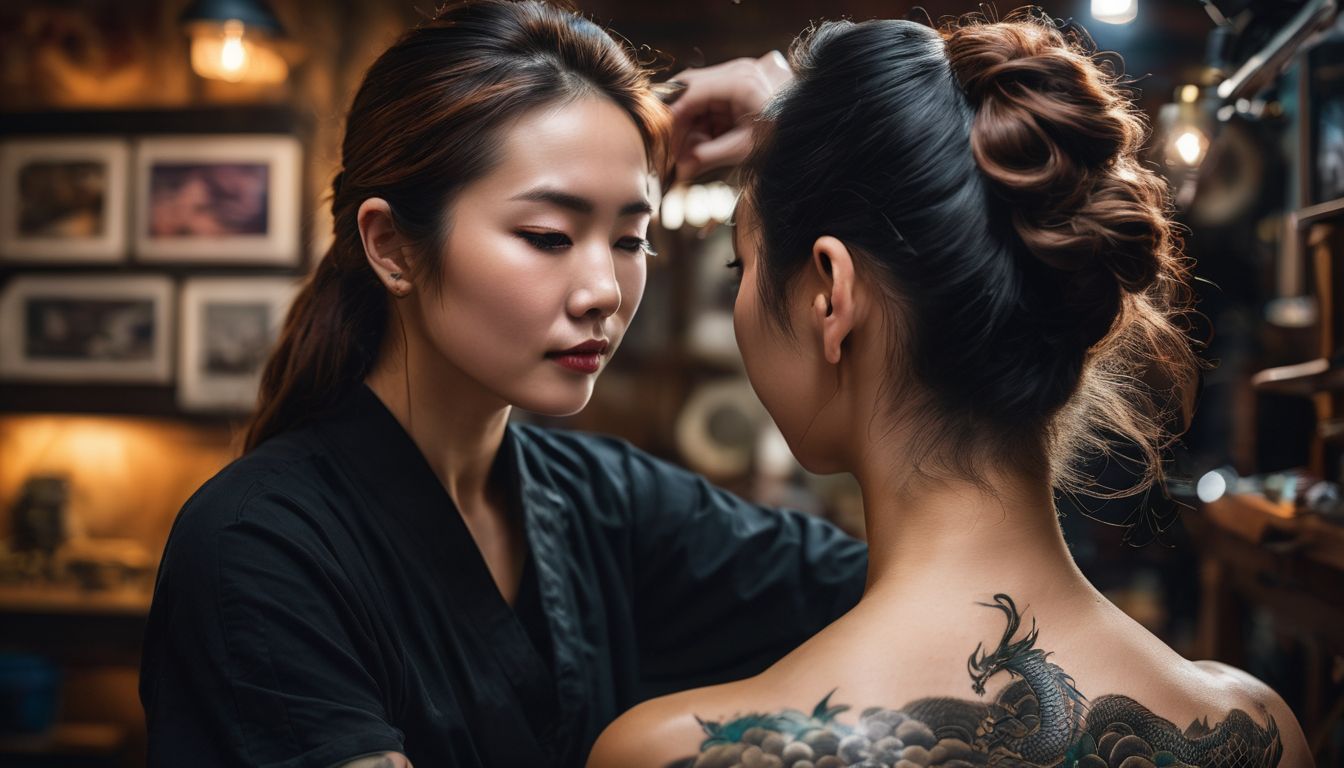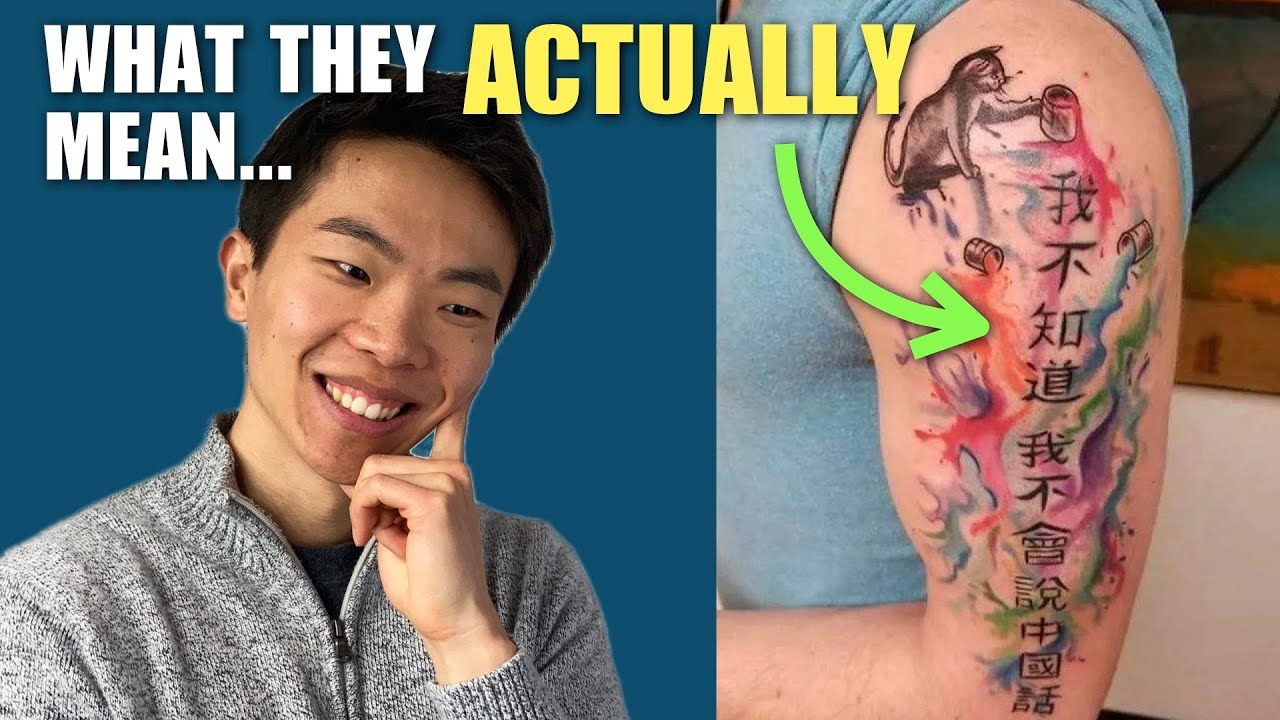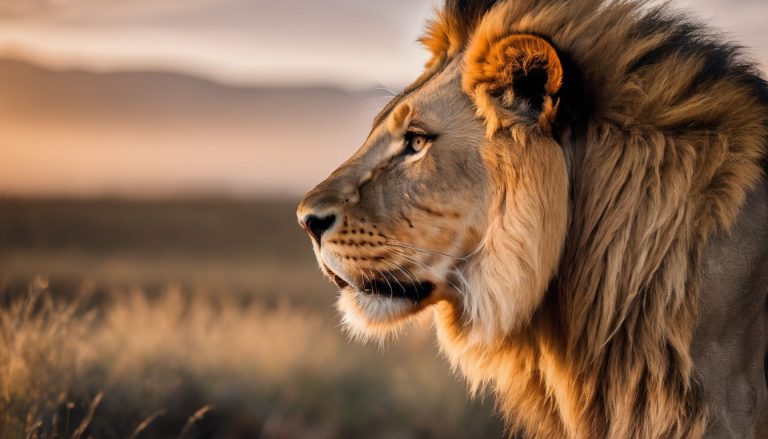The History and Meaning of Chinese Tattoos
Create your own unique tattoos and art for your home
For many, choosing a tattoo is about finding artwork that carries deep meaning. Tattoos have been part of Chinese culture for thousands of years, seen as both art and statement. This blog dives into the rich history and symbolism behind Chinese tattoos to help you understand their significance before inking them on your skin.
Keep reading – there’s a world of ancient beauty waiting to be explored!
Key Takeaways
- Chinese tattoos date back thousands of years, originally used to brand criminals but have evolved into a form of personal expression and art.
- Traditional designs like dragons, phoenixes, lotus flowers, and koi fish carry deep meanings such as power, rebirth, purity, and perseverance.
- Modern Chinese tattoos blend traditional symbols with contemporary styles like watercolor splash ink style or realistic painting techniques.
- While there’s no national ban on tattooing in China, restrictions do exist at local levels focusing on hygiene standards and societal attitudes towards visible body art.
- Symbols and quotes in Chinese tattoos typically hold cultural significance; popular choices include characters that represent virtues like strength or wisdom.
History of Chinese Tattoos
Tattooing in China has a long history, dating back thousands of years. The linguistic origin of Chinese characters also plays a significant role in the symbolism and significance of traditional Chinese tattoos.
Tattooing in China
Tattooing in China carries a rich heritage, where ancient practices once used ink to brand wrongdoing. Known as 涅 (niè), meaning “to dye black,” traditional methods like cìqīng and wénshēn etched symbols deep into the skin.
This art form transformed over time from marking criminals to representing personal expression and individual interests. Chinese tattoo culture reflects a journey from punitive origins to avenues of self-expression.
Historically, tattoos were tied closely with identity, especially within Chinese organized crime groups known as the “Triads.” These intricate designs served as badges of affiliation for members back in the 18th and 19th centuries.
Yet not all historical ink told stories of lawlessness; legendary figures like General Yueh Fei bore tattoos symbolizing loyalty during the South Song Dynasty era. Today’s Chinese body art is diverse, embracing both traditional Chinese symbols and modern trends while navigating evolving societal attitudes towards this expressive craft.
Linguistic origin
The linguistic origin of Chinese tattoos dates back to ancient China, where the practice was referred to as 涅 (niè), meaning “to dye black.” In traditional Chinese culture, tattooing involved intricate methods such as cìqīng, wénshēn, lòushēn, zhāqīng, and 点青.
The word for tattooing itself means “applying ink to the body,” reflecting the historical significance of using ink as a form of artistic expression and cultural symbolism in China.
As Chinese tattoos have evolved over time, their linguistic origin remains rooted in the rich history and traditions of ancient China. From marking prisoners with specific symbols to becoming an avenue for personal expression and artistry, the linguistic origins of Chinese tattoos reveal a captivating journey through time.
Significance in ancient China
Having explored the linguistic origin of Chinese tattoos, it is crucial to delve into their significance in ancient China. In ancient times, Chinese tattoos held deep cultural and social significance.
They were often associated with spirituality, protection, and expressing one’s identity within the community. Moreover, it was believed that these intricate designs served as a form of communication with the spiritual realm.
Tattoos also played a significant role in distinguishing different societal roles and hierarchies within ancient Chinese civilization. For instance, certain symbols or motifs were reserved for warriors or individuals of noble status to signify their bravery or allegiance to a particular dynasty.
Additionally, tattoos were linked to traditional practices such as medicine and mysticism; healers often bore specific symbols denoting their expertise in remedies or spiritual healing.
Significance in modern China
Tattoos in modern China hold significant cultural importance. They are increasingly being embraced as a form of self-expression and individuality, challenging longstanding conservative attitudes towards body art.
In contemporary Chinese society, tattoos are not only symbols of personal identity but also fashion statements, with younger generations using them to exhibit creativity and uniqueness.
The emerging popularity of Chinese calligraphy tattoos and traditional ink designs reflects a growing appreciation for the country’s rich artistic heritage. Furthermore, there is a shift in perception from tattooing being associated with criminal elements to it becoming more widely accepted as an art form.
Styles of Chinese Tattoos
Chinese brush painting style, Chinese realistic painting style, and watercolor splash ink style are some of the popular styles used in Chinese tattoos. To learn more about the different styles and their significance, keep reading!
Chinese brush painting style
The Chinese brush painting style is a popular choice for tattoos due to its elegant and timeless aesthetic. This style incorporates the traditional art of Chinese ink wash painting, utilizing fine-tipped brushes to create delicate lines and beautiful, flowing compositions.
The use of monochromatic ink in varying shades allows for striking contrast and depth in the design, often featuring natural subjects such as birds, flowers, or landscapes. Chinese brush painting tattoos are steeped in cultural significance, embodying the rich artistic heritage of China while offering a sophisticated and visually captivating option for body art enthusiasts.
The history and symbolism behind this tattoo style make it a compelling choice for those seeking a meaningful yet visually stunning design. With its roots deeply embedded in traditional Chinese artistry, the brushstroke technique carries with it an air of sophistication and time-honored tradition.
Chinese realistic painting style
Moving on from the whimsical brush painting style, Chinese realistic painting style captures intricate details with a focus on lifelike representation. This tattooing technique intricately reproduces images and scenes with a high level of precision, creating stunningly realistic body art.
Inspired by traditional Chinese realist paintings, these tattoos often feature subjects like landscapes, animals, and portraits rendered in meticulous detail. Artists skilled in this style use fine lines and shading to achieve depth and dimension in their designs, resulting in visually captivating works of art.
A popular choice for those seeking timeless elegance and sophistication in their tattoos, the Chinese realistic painting style brings an air of artistic mastery to body ink. With its roots deeply embedded in the rich history of traditional Chinese artistry, this tattooing approach serves as a testament to the enduring cultural influence that continues to shape modern interpretations of body art across the globe.
Watercolor splash ink style
The watercolor splash ink style of Chinese tattoos is characterized by its fluid and expressive designs, emulating the brushstrokes of traditional Chinese paintings. This style often features vibrant colors merging together in a free-flowing manner, creating an ethereal and dynamic appearance that captures the essence of Chinese artistry.
Watercolor splash ink tattoos frequently incorporate elements such as flowers, animals, or calligraphy, offering a modern interpretation of classic Chinese motifs while embracing the spontaneity and fluidity of watercolor painting.
Moving on to “Laws and Regulations,” restrictions on tattooing in China have evolved alongside cultural shifts, shaping contemporary practices within the country’s tattoo industry.
Laws and Regulations
Tattooing in China is subject to restrictions, with certain regulations and government policies governing the practice. Understanding these laws and regulations is important for anyone interested in getting a Chinese tattoo.
Restrictions on tattooing in China
Chinese restrictions on tattooing are primarily associated with the societal stigma attached to tattoos. Although there is no nationwide ban, many businesses and public institutions in China have regulations against employees visibly displaying tattoos while at work.
Additionally, certain cultural and religious sites may refuse entry to individuals displaying visible tattoos due to the negative stereotypes associated with them.
Furthermore, some local governments may enforce specific laws regarding tattoo parlors, including licensing requirements and health regulations. These restrictions reflect the social attitudes towards body art in Chinese culture and highlight the complexities surrounding traditional and modern perceptions of tattoos in China.
Government policies
In light of the restrictions on tattooing in China, government policies regarding tattoos have evolved over time. Today, there are no specific national laws that prohibit tattooing in China; however, regulations may vary at the local level.
Local governments hold authority when it comes to setting rules and regulations for tattoo parlors and artists.
Currently, a major concern for Chinese authorities is ensuring hygiene and safety standards within the tattoo industry. This has led to requirements for licensing and health inspections as well as guidelines for disposing of waste materials.
Meaning and Symbolism in Chinese Tattoos
Chinese tattoos often carry deep meanings and symbolism, with the importance of symbols and quotes playing a significant role. Popular designs include Chinese character tattoos, which can represent strength, love, or wisdom.
Importance of symbols and quotes
Symbols and quotes are highly significant in Chinese tattoo designs, often carrying deep cultural and spiritual meanings. From the timeless elegance of calligraphy to the intricate symbolism of traditional Chinese characters, these elements add layers of depth and personal significance to each tattoo.
For instance, the use of Confucius quotes or Taoist symbols reflects a profound connection to ancient wisdom and philosophical beliefs. Additionally, popular symbols like dragons, phoenixes, lotus flowers, and yin-yang signs are rich with historical context and represent various virtues such as strength, rebirth, purity, and balance.
Moreover, Chinese tattoos with meaningful symbols and quotes serve as a visual representation of an individual’s values, aspirations, or personal experiences. These culturally rooted designs allow wearers to express their identity while honoring their heritage or embracing specific aspects of Chinese culture that resonate with them.
Popular Chinese tattoo designs
Popular Chinese tattoo designs include a wide range of symbols and imagery that hold significant cultural and aesthetic meanings. From traditional to modern interpretations, Chinese tattoos offer a variety of designs that reflect the rich history and symbolism of Chinese art and culture.
- Dragon: The dragon holds immense cultural significance in Chinese mythology, symbolizing power, strength, and good luck.
- Phoenix: Representing rebirth and renewal, the phoenix is a popular choice for those seeking a meaningful and elegant design.
- Koi Fish: A symbol of perseverance and determination, the koi fish is often depicted swimming upstream, signifying overcoming obstacles.
- Lotus Flower: Reflecting purity, enlightenment, and new beginnings, the lotus flower is a timeless and serene design choice.
- Bamboo: Symbolizing resilience and flexibility, bamboo designs are sought after for their graceful simplicity and deep cultural meaning.
- Chinese Characters: Whether it’s a single word or a meaningful quote, Chinese characters are widely used in tattoos to convey personal beliefs or values.
Cultural Significance and Evolution of Chinese Tattoos
Traditional Chinese tattoos hold a deep cultural significance and reflect ancient practices. However, modern interpretations and trends in Chinese tattoos have evolved to incorporate contemporary design elements and personal expression.
Traditional Chinese tattoos
Chinese tattoos have a rich history rooted in ancient cultural traditions, with traditional methods including cìqīng, wénshēn, lòushēn, zhāqīng, and 点青. These techniques date back centuries and were used to create intricate and symbolic designs on the body.
Traditional Chinese tattoos can feature a wide array of symbols such as dragons, phoenixes, tigers, and other mythical creatures that hold deep cultural significance. Each symbol is carefully chosen for its auspicious meaning, reflecting the wearer’s beliefs or aspirations.
Ancient Chinese texts depict tales of bandits adorned with full-body tattoos which were seen as defamatory at the time. However, today these traditional tattooing techniques are embraced as an art form that showcases the beauty of Chinese aesthetics and symbolism.
Modern interpretations and trends
From traditional Chinese tattoos, the modern era has ushered in new trends and interpretations that reflect changing cultural norms and personal expressions. Contemporary Chinese tattoo designs often incorporate a fusion of traditional aesthetic symbols with modern elements, resulting in unique styles that appeal to a wider audience.
In recent years, there has been an increasing emphasis on minimalist designs and subtle imagery, reflecting a shift towards understated elegance and sophistication in Chinese tattoo art.
Additionally, innovative techniques such as watercolor splash ink style have gained popularity among younger generations seeking more vibrant and dynamic tattoo options.
As attitudes toward body art continue to evolve, Chinese symbol tattoos with profound meanings are becoming increasingly popular choices for self-expression. Moreover, the adoption of Western-style realism painting within Chinese tattooing reflects a growing openness to cross-cultural influences.
Modern Chinese language symbols have also found their way into contemporary tattoo designs, adding layers of depth and personal significance for those wishing to pay homage or convey specific messages through their body art.
Conclusion
In conclusion, Chinese tattoos have evolved from a historical form of punishment and symbolism to a modern expression of personal preference. The history of tattooing in China reflects changing cultural perceptions and practices surrounding body art.
From traditional designs to contemporary interpretations, Chinese tattoos continue to hold significant cultural and aesthetic symbolism. As an enduring part of Chinese culture, tattoos offer insight into the rich historical and contemporary significance within China’s ever-evolving social landscape.
FAQs
1. What do Chinese tattoos mean?
Chinese tattoos often feature powerful symbols and quotes that hold deep meanings, reflecting ancient traditions and the rich cultural significance of China.
2. Has tattooing been a part of Chinese history for a long time?
Yes, the history of tattooing in China goes back to ancient times, with traditional Chinese ink used to create meaningful designs as part of their cultural heritage.
3. Can I get a temporary version of a Chinese tattoo?
Absolutely! You can try out Chinese temporary tattoos that mimic traditional brushstrokes before making a permanent decision.
4. Are there special styles for Chinese tattoos?
Definitely! Traditional Chinese ink creates distinctive brushstroke tattoos that capture the essence and aesthetic symbolism unique to the culture.
5. Why might someone choose a Chinese tattoo design?
People might pick a Chinese tattoo for its beautiful artistry or to connect with the significant meanings rooted in centuries-old Chinese traditions and beliefs.










